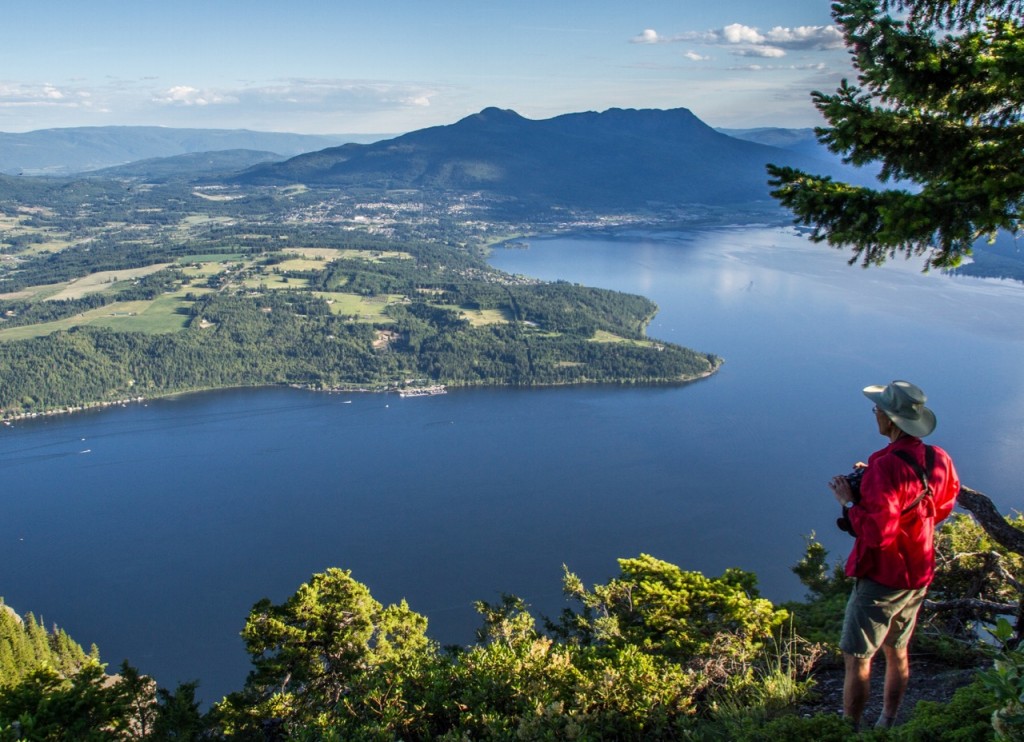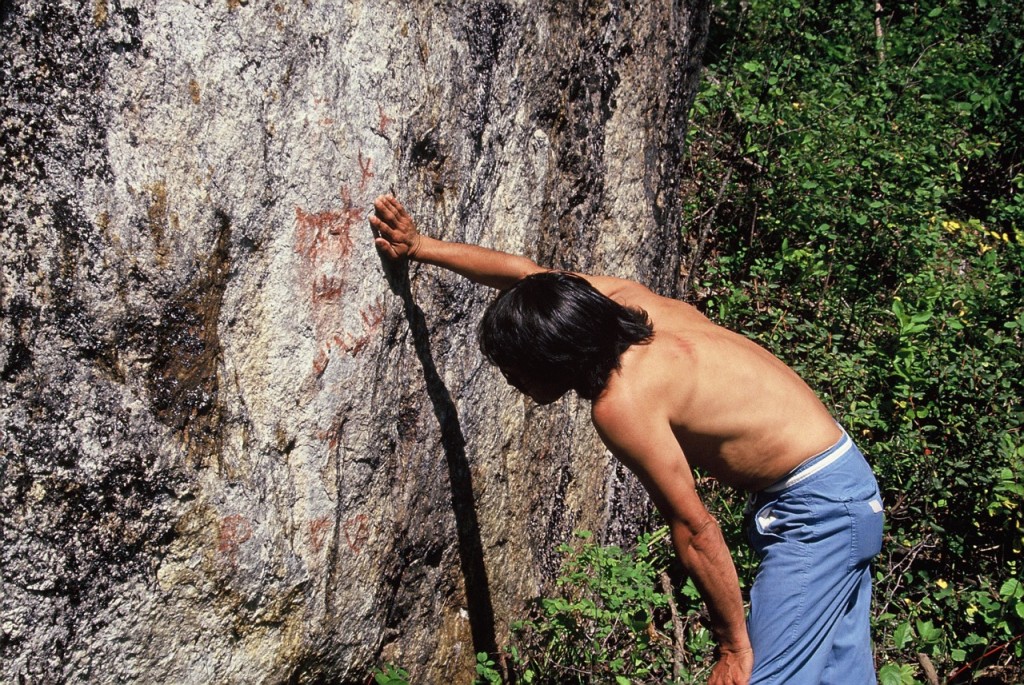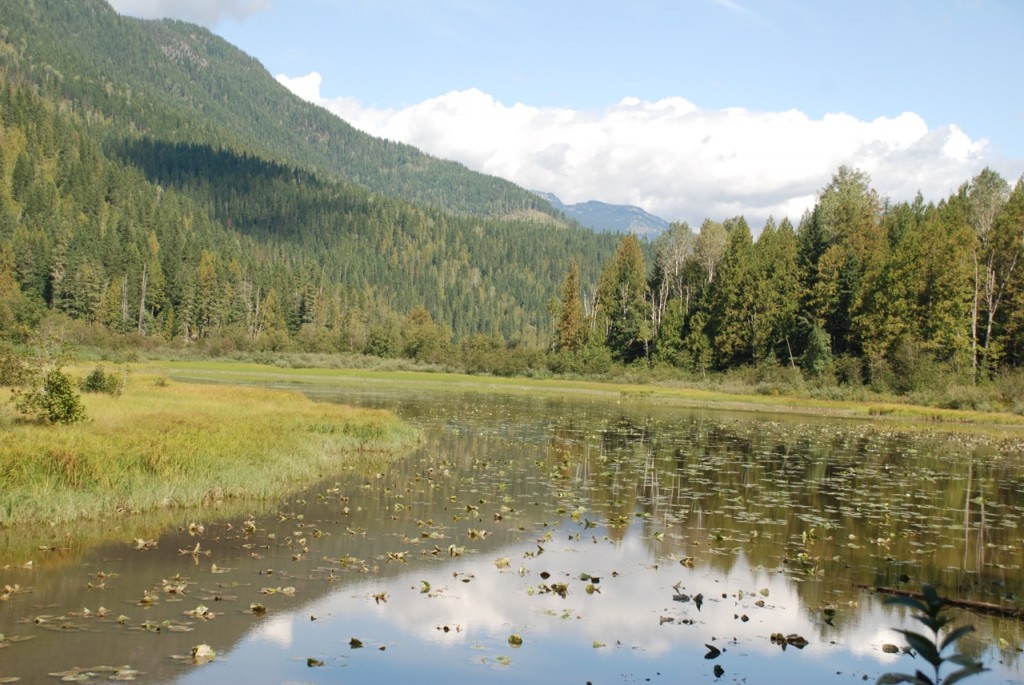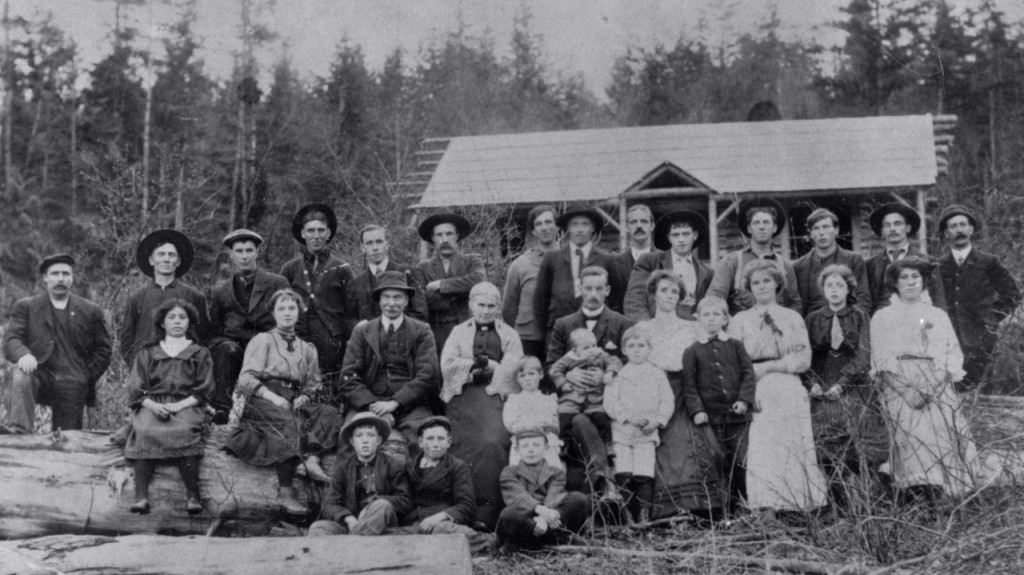The view from Bastion Mountain, photo by Wendy Clay
Secondary school students returning to Shuswap schools this fall have a new resource to use that will improve their knowledge about their home place. Everything Shuswap will form part of their social studies curriculum and will be used in other classes as well. Although it is the most comprehensive source of information about our region to date, there is much more to be learned about the Shuswap and the book can be used as a source of ideas for more study and research.
Pictographs at Momich Lake
In addition to serving as an educational resource, sales of Everything Shuswap provide funding for outdoor learning opportunities through field trips. Ideally, the two benefits can be combined, so that students can visit areas described in the book to learn more about specific locales. Much more can be learned about each of the sub-drainages described in the first chapter, including details about geological features, wildlife, plant life, hydrological features and history.
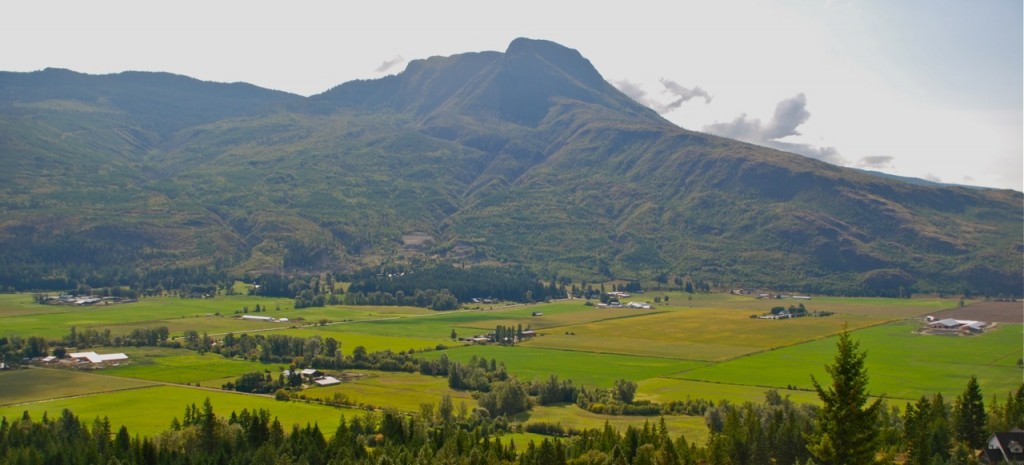 As an example, the Salmon River watershed is highly complex and very diverse, given that the river flows underground through parts of the upper valley during the dry season and agriculture has caused so many impacts. Students could research the extensive flow data available from floods to drought depending on the time of year, the damage done to the riparian area and the restoration efforts done to date, the loss of the once mighty salmon run and the impacts from logging, fires and mountain pine beetles.
As an example, the Salmon River watershed is highly complex and very diverse, given that the river flows underground through parts of the upper valley during the dry season and agriculture has caused so many impacts. Students could research the extensive flow data available from floods to drought depending on the time of year, the damage done to the riparian area and the restoration efforts done to date, the loss of the once mighty salmon run and the impacts from logging, fires and mountain pine beetles.
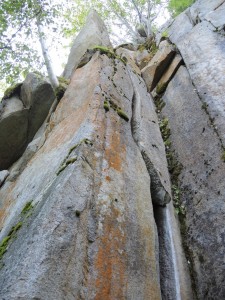 One learns in the geology chapter, how most of the rock found in the Shuswap is metamorphic and many millions of years old. One interesting project for students would be to visit, photograph, classify and map those areas that contain other types of rock. These include the relatively few Shuswap climbing sites such as the granitic rock at Syphon Creek in Gleneden. Mt. Ida would be an excellent destination for a field trip where one can find both ancient volcanic sedimentary rocks.
One learns in the geology chapter, how most of the rock found in the Shuswap is metamorphic and many millions of years old. One interesting project for students would be to visit, photograph, classify and map those areas that contain other types of rock. These include the relatively few Shuswap climbing sites such as the granitic rock at Syphon Creek in Gleneden. Mt. Ida would be an excellent destination for a field trip where one can find both ancient volcanic sedimentary rocks.
The ecology chapter offers many opportunities for more study, including developing a deeper understanding of the biogeoclimatic classification system. Each of the five zones found in the Shuswap are further divided into many sub-zones with different moisture and temperature regimes. Students could learn to recognize these sub-zones by identifying the different types of plants found in each one. Further research could focus on the diversity of wildlife found in various zones and the geographic and climatic features that determine which plants thrive.
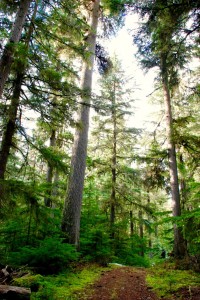 Old growth forests are in decline due to logging, settlement, pests and fires. Remaining stands offer excellent opportunities for study and research and thankfully, there are many stands of ancient trees protected in the Larch Hills. One project would be to identify, measure, map and photograph or sketch the largest white pine, cedar, fir and hemlock trees still standing. Field trips into these forests could also inspire students to write essays or poetry, create videos or compose music.
Old growth forests are in decline due to logging, settlement, pests and fires. Remaining stands offer excellent opportunities for study and research and thankfully, there are many stands of ancient trees protected in the Larch Hills. One project would be to identify, measure, map and photograph or sketch the largest white pine, cedar, fir and hemlock trees still standing. Field trips into these forests could also inspire students to write essays or poetry, create videos or compose music.
Old growth forest trail in the Larch Hills
Wetlands are a crucial component of the Shuswap ecosystem and deserve greater attention and study. Within the city of Salmon Arm, many wetlands have been paved over and built on, while others are impacted by development. Students could catalogue these areas and visit them to identify plant and animal species and determine how healthy they are and if and how they are threatened.
There is much more to be learned about the Secwepemc people, who have lived here since time immemorial. Many of the papers used for research when writing chapter four are available for study online at shuswapwatershed.ca. The most detailed treatise, James Teit’s The Shuswap, deserves to be read by all students. 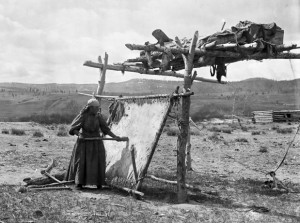 One potential project would be to create a timeline that shows the different archeological periods, the beginning of the fur trade era, the start of the reserve system and the beginning and end of the very damaging residential schools.
One potential project would be to create a timeline that shows the different archeological periods, the beginning of the fur trade era, the start of the reserve system and the beginning and end of the very damaging residential schools.
The settlement era was filled with fascinating characters who would make interesting topics for student papers. Each Shuswap community has its own unique history and most have books filled with stories about pioneer families that students could study and write about. Perhaps one of the most interesting aspects of pioneer life that could be topic for more research and study was their remarkable ability to build so many structures by hand in such short periods of time.
Overall, the ideal way for teachers to utilize Everything Shuswap in their classrooms is to use the text, photos and graphs as the starting point for more in-depth research. As the study of the Shuswap in local schools gains traction, in addition to gaining more knowledge, students will gain greater respect and more appreciation for their home place.
POSTSCRIPT
This column just scratches the surface of all that can be studied about the Shuswap region. Ideally, one day there should be a full semester course about the Shuswap and students could both learn about their home place and do research to gain more information and data.
